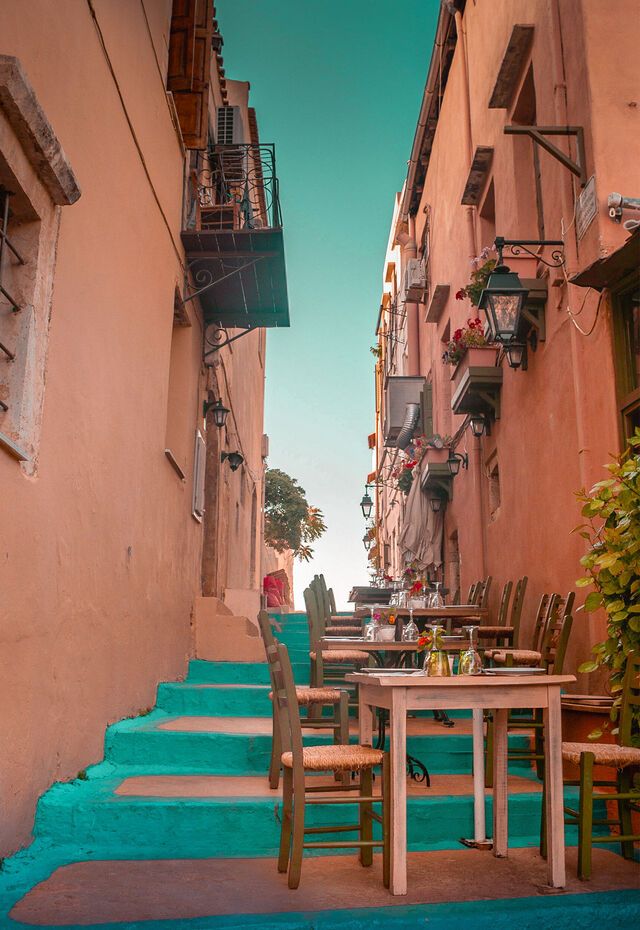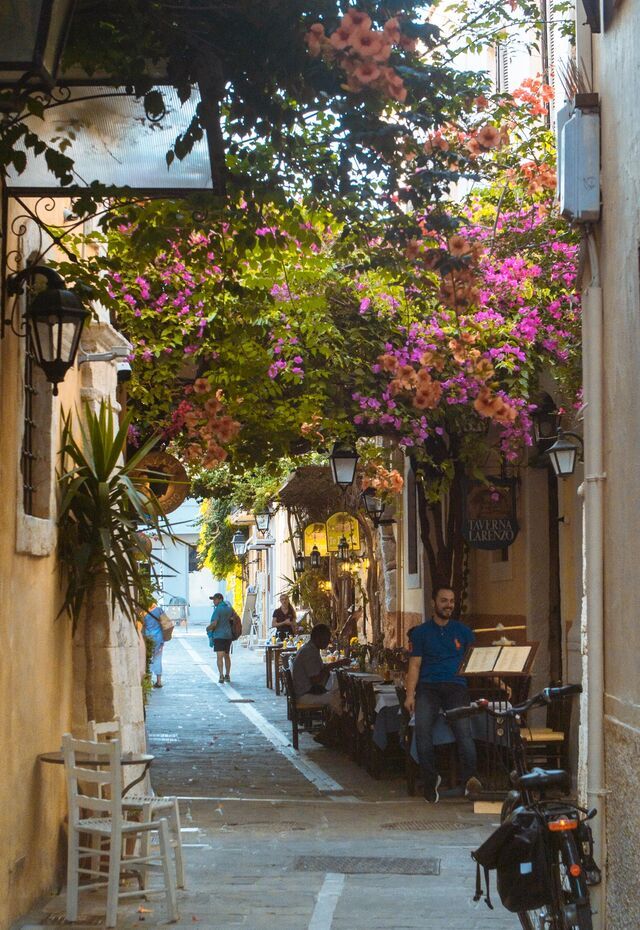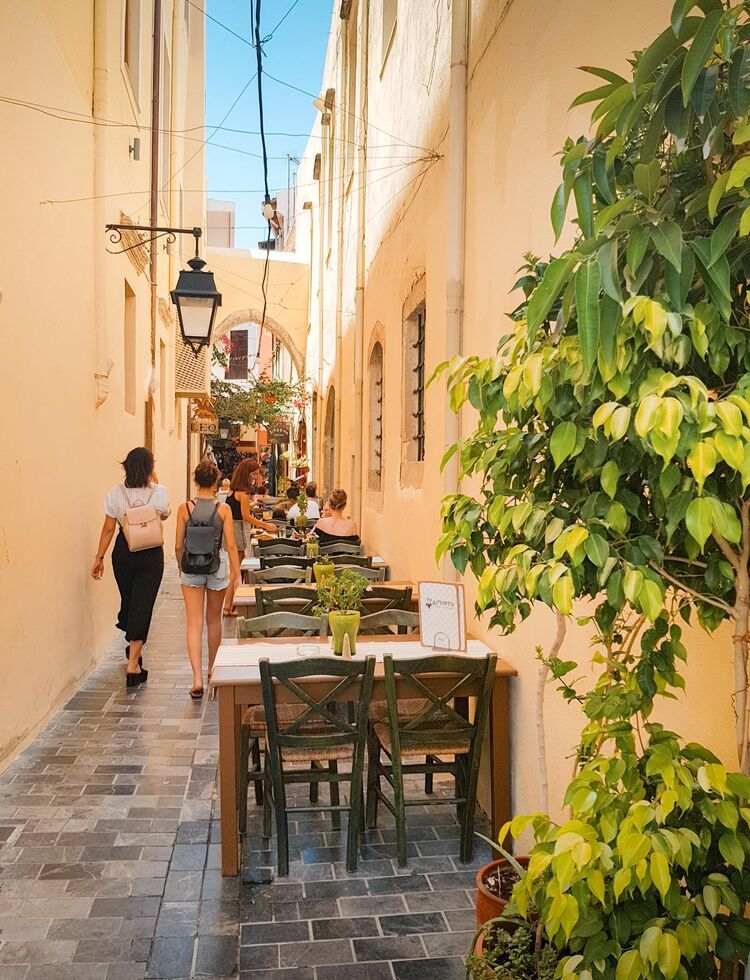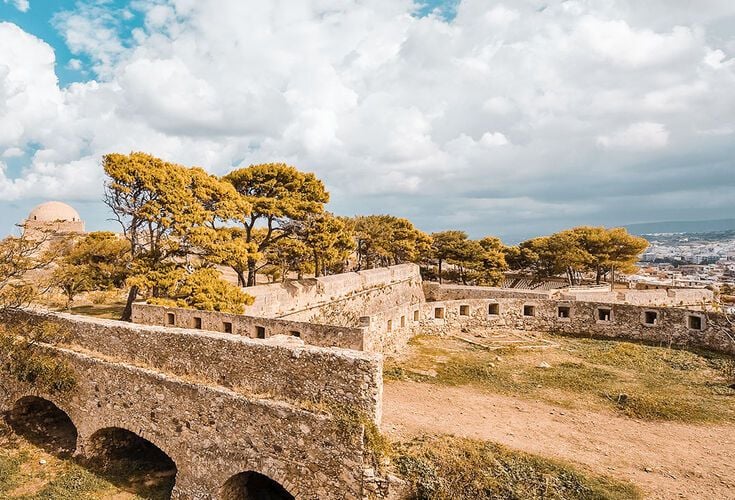Highlights of Rethymno Old Town
Ethnikis Antistaseos Street
The archway of the Guora Gate – also called Megali Porta (Big Gate) – marks your entry into the old town. It was the central gate to the once fortified city and is the only surviving section of the protective walls introduced in the 16th century. From here, you amble down Ethnikis Antistaseos Street, which morphs onto Platia Mikrasiaton and is the heart of the historic centre, filled with shops with local products, cafes and tavernas. It’s worth having few suggestions for traditional Cretan dishes up your sleeve: Kaltsounia (cheese and herb pies), Gamopilafo (‘Wedding’ pilaf with goat or rooster), Tsigaristo (slow-cooked lamb), hochli (snails), Apaki (cured pork) and Boureki (courgette and potato pie).
The Church of Agios Frangiskos
Continuing down Ethnikis Antistaseos, you arrive at the basilica of St Francis, built by the Venetians as a Franciscan Friary church. Stop to appreciate the Renaissance touches of the intricate doorway. The building now houses Rethymno’s Archaeological Museum.
The Neratzes Mosque
A little further along you arrive at Neratzes (or Gazi Hussein) Mosque and its towering minaret. It was the Venetians’ Church of Santa Maria (belonging to the Augustine Monastery) before being converted by the Ottomans in the 17th century with the addition of three domes, but it has retained its original elaborate entrance. Today it functions as the Municipal Odeon.
The Historical and Folklore Museum
You’ll enjoy walking around this 17th-century Venetian mansion and the collection of traditional handicraft and folk art that it contains. The museum also serves as a research centre for the preservation of Cretan Folklore culture.
The Rimondi Fountain
The three lion heads of this ornately decorated fountain still spill water into their basins, as they did when the Venetians built it in 1626 on the site of a former Roman fountain. The inscriptions of ‘LIBERALITATIS’ and ‘FONTES’ were an invitation to the 17th-century population to drink freely from the fountain.
Venetian Loggia
Originally open and covered with a wooden roof, the Loggia was a meeting place for Venetian nobility and officials. The walls added in 1625 include handsome arches, which give it a stately air. Now owned by the Culture Ministry, the Loggia sells guide books and authenticated copies of antiquities.
The Venetian Harbour
The Venetian Harbour is a symbol Rethymno as it was here that the nascent city began to flourish from 1300. The original lighthouse has been replaced by one built by the Egyptians during the 1830s. This is the ideal place to enjoy fresh fish in a seaside taverna.
The Fortezza
The harbour is also the location of Rethymno’s much-photographed 17th century Fortezza. Only a number of the buildings that once made up a citadel within its walls remain, but you will easily understand its original grandeur as one of the biggest constructions of Venetian Crete. It offers panoramic views of the city and the sea.
A waterfront stroll
From here, you can end your walk with a stroll along the palm tree-lined Eleftheriou Venizelou waterfront towards the new marina. Find yourself a table overlooking the sea and order a drink. If you’re here at sunset, you’ll soon find yourself in good company. The marina has some of Rethymno’s best nightlife spots.




